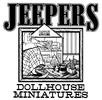What is Bunka?
Bunka is a form of Japanese embroidery done with a punch needle and a flexible chain stitched thread. The special rayon thread or cord used is known as Kayo, although outside of Japan it is most often sold as "bunka thread." It is similar to the material used to make decorative tassels and graduation tassels. It is shiny and has a nice drape. When used as bunka embroidery, it is worked with a punchneedle to secure the stitches, working on top of the design (the reverse of Russian punchneedle embroidery) with the special rayon bunka cords on the top surface of the embroidery. The threads are unraveled to various thicknesses by pulling on a loose thread on the end of the cord. Directional stitches of stretched or loop effect unraveled threads are secured with a special loop needle, used to produce a surface with a brushstroke effect.
This trim is especially valuable to miniaturists, because if the thread is pulled, it unravels into a lovely, loopy, stretchy thread which can be used for many things. Bunka is available in dozens of colors. Variegated bunka and metallic bunka threads are also available.
What do miniaturists do with bunka?
Some of the things for which miniaturists use unraveled bunka are curly doll hair, lace trim on the edges of clothing, and as a decorative trim for the edges of pillows. Plain bunka can be used a piping for upholstered miniature furniture. Unraveled bunka has also been used to make rugs. When making rugs, the cord can either be needle-punched into fabric, or can simply be glued onto the fabric. The loopy quality provides a nice pile for a miniature area rug.
Using Bunka For Miniature Doll Clothing Trims or Miniature Upholstery
For miniatures, colorful bunka threads are often unraveled and used as fine, loop effect trims for doll clothing or stitched into small floral trims. You can pull bunka threads to a number of different patterns. The first pull or unraveling usually produces the stretchy loop trim most often used for doll clothing or miniature embroidery. A second pull of the individual threads will separate them further, into very fine waved strands. Bunka in its cord form is useful for piping on miniature upholstery and cushions, as long as the cord ends are secured with glue or fray check so they will not unravel.
Using Bunka For Miniature Rugs
Bunka can also be used in the traditional embroidery fashion, to make miniature rugs or wall hangings for dollhouses. Rugs can be worked by using a traditional bunka needle on a pattern, or by gluing unraveled bunka thread to a pattern drawn on a fabric backing. This is a method often used to mimic hooked rugs in miniature. A toothpick can be used to manipulate the unraveled bunka thread into the pattern section to which glue has been applied, beginning with the most detailed areas first. Bunka rugs in miniature look similar to hand hooked rugs in full scale.
Bunka for Dolls Hair or Miniature Floral Displays
Bunka will also work for curly doll hair, although as it is rayon it is very shiny. You can pull the bunka either once, for curly short hair applied to a doll's head, or twice, for finer, more separated fibers. Lengths of unraveled bunka are used by some miniature florists for rough representations of grouped flowers like wisteria, lilacs, buddleia or hyacinths. These have the advantage of being fast and colorful, although they don't bear close inspection.
Tips on Working With Bunka
To obtain thread to stitch your bunka to doll clothing or upholstery, pull some of the cord to a single strand for use in your sewing needle. You can pull bunka to a single thread from either the original cord (moisten the end of the cord and pull on one of the single threads at the corner) or from your first pull of thread which forms the loopy thread from the smooth bunka cord. Moisten the end of the loopy section and pull a single thread.
 US Dollars
US Dollars
 Canadian Dollar
Canadian Dollar
 Euro
Euro
 UK
UK
 Icelandic Króna
Icelandic Króna
 Russian Ruble
Russian Ruble
 Swedish Krona
Swedish Krona
 South African Rand
South African Rand
